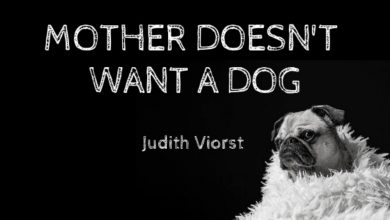In a world where plastic dolls reign in a meticulously orchestrated realm of pink perfection, one unexpected journey challenges societal norms and delves into the human condition itself. “Barbie” ventures beyond its glossy surface to explore profound themes of identity, feminism, and the power of change. Gerwig’s screenplay, co-written with Noah Baumbach, weaves a masterful balance between critiquing Barbie’s influence on impressionable minds and celebrating the doll’s iconic legacy. As “Barbie” seamlessly transitions between a hard sell for woke viewers and a heartfelt exploration of inanimate objects coming to life, it navigates delicate themes with a touch of irreverence and unexpected pathos. The clever wit and playful satire cleverly disguise the underlying depth of the narrative, making it a captivating experience for audiences of all ages.
Barbie | Movie Review
Plot
The movie follows the adventures of the titular character, a perfect and carefree inhabitant of Barbieland, where everything is pink and perfect. However, Barbie’s life takes a dramatic turn when she begins to experience human emotions and existential thoughts, leading her to question her perfect world. She seeks guidance from Weird Barbie, who advises her to venture into the real world to find the girl who plays with her, hoping to discover the source of her newfound feelings.
Accompanied by Ken, Barbie embarks on a journey to the real world, where she encounters the complexities of human society, including sexism, gender inequity, and the challenges faced by women. Meanwhile, Ken discovers a contrasting world of toxic masculinity. As Barbie and Ken navigate through the real world’s issues, they undergo personal growth and enlightenment, learning valuable lessons about the power of self-discovery and the importance of challenging societal norms, and diving headfirst into the realm of the human psyche.
As the film progresses, the central conflict of Barbie’s internal struggle takes center stage, as she grapples with the conundrum of harmonizing her immaculate plastic existence with the kaleidoscope of imperfections and intricacies exhibited by humanity. The clash between the fabricated perfection of Barbieland and the raw authenticity of the real world engenders a profound introspection within her.
Characters & Performances
“Barbie” presents a vibrant array of characters, at the center of it all is Margot Robbie’s portrayal of “Stereotypical Barbie”, a character who transcends her plastic origins with a nuanced and captivating performance. Robbie imbues Barbie with a delightful blend of charm, vulnerability, and intelligence, making her much more than a mere toy. Through her journey from a carefree and perfect Barbie in Barbie Land to a character grappling with existential thoughts, Robbie brings a sense of authenticity to Barbie’s emotional arc.
Ryan Gosling’s Ken is a scene-stealing delight, serving as both a comedic foil and a vehicle for exploring themes of toxic masculinity. Gosling’s deadpan delivery and boy-band dance moves add a layer of wit and hilarity to the character, while his journey into the Real World allows him to grapple with the absurdity of male entitlement.
The supporting cast also shines brightly. Kate McKinnon’s portrayal of Weird Barbie, an enigmatic and reclusive doll, offers a quirky and memorable performance. Her interactions with Barbie provide a whimsical and insightful exploration of the complexities of identity and self-discovery. America Ferrera and Ariana Greenblatt play their roles as a mother-daughter duo with genuine emotional depth and connect the movie to the real world.
As for the ensemble of Kens, Simu Liu and Kingsley Ben-Adir stand out with their distinct performances, adding depth and humor to their Ken counterparts. Their competition for Barbie’s affection, along with the other Kens, cleverly parodies male behavior and the absurdity of performative masculinity.
Technical Elements
First and foremost, the production design by Sarah Greenwood is a marvel. Barbieland is a visually stunning, kaleidoscopic wonderland that perfectly captures the plastic-perfect aesthetic associated with Barbie dolls. The meticulous attention to detail in creating the dreamlike setting adds to the film’s overall charm. From the open-faced mansions to the disco-dance parties, every aspect of Barbieland feels carefully crafted to immerse the audience in this fantastical world.
Jacqueline Durran’s vibrant and imaginative costume design is another highlight of the movie. Each character’s outfit is purposefully tailored to reflect their personality and role in the story. The iconic Barbie fashion is brought to life with flair, showcasing a wide array of ensembles that celebrate both the classic and modern interpretations of the doll. The costumes, in combination with the distinct character performances, add to the film’s visual appeal and provide a delightful feast for the eyes. The artistry of the makeup department also deserves praise. The characters’ appearances are beautifully executed, bringing out their unique features and adding to the overall plastic-fantastic vibe of Barbieland. The makeup enhances the visual storytelling, underscoring the contrast between the perfect, plastic world and the more imperfect, human aspects that emerge throughout the narrative.
Rodrigo Prieto’s cinematography captures the film’s vivid colors and elaborate sets with finesse. The camera work complements the whimsical tone of the movie, seamlessly transitioning between Barbieland’s cheerful and colorful landscapes and the more grounded, real-world settings. The use of different visual styles for each world further emphasizes the dichotomy between Barbie’s manufactured reality and the complexities of the real world.
The film’s music and musical numbers also play a significant role in its overall appeal. The soundtrack features a mix of catchy, toe-tapping tunes that enhance the film’s light-hearted and joyful moments. The inclusion of background songs and musical performances adds to the film’s charm, often injecting humor and wit into the narrative. The editing by the post-production team contributes to the film’s pace and flow. The seamless transitions between scenes keep the story engaging, and the editing choices during musical numbers ensure they are visually captivating. The editing effectively navigates the film’s tonal shifts, smoothly transitioning between the comedic and more serious moments.
Thematic content
Known for her distinctive style of storytelling and nuanced character development, Gerwig continues to challenge and provoke audiences with her latest venture. One of the central themes in “Barbie” is the examination of societal expectations and the pressure to conform to gender stereotypes. Gerwig’s screenplay cleverly uses the iconic Barbie doll as a vehicle to critique the influence of traditional beauty standards and gender roles on young girls. Barbie’s journey from her seemingly perfect and superficial existence in Barbieland to the real world, where she confronts issues like sexism and toxic masculinity.
This theme of self-discovery and the search for authenticity is not new to Gerwig’s work. In her previous films like “Lady Bird” and “Little Women,” she has explored the complexities of female identity and the desire to break free from prescribed roles and expectations. In “Barbie,” this theme is amplified through the character’s transition from a manufactured doll to a more genuine, multifaceted individual.
Furthermore, Gerwig’s incorporation of various references and allusions to other movies adds depth and layers to the thematic content of “Barbie.” For instance, the film’s prelude, which parodies the “Dawn of Man” sequence from “A Space Odyssey:2001,” serves as a playful nod to the film’s exploration of evolution and self-awareness. This reference cleverly sets the tone for the film, foreshadowing Barbie’s own evolution and awakening. The movie’s riff on the Greek myth of Pygmalion also contributes to the thematic richness, by transforming the classic tale of a male sculptor falling in love with a statue into a story of empowerment and agency, Gerwig reclaims the narrative for a modern, feminist perspective. This reimagining of a traditional story aligns with Gerwig’s overarching thematic interest in challenging traditional gender roles and narratives. Gerwig’s film also engages with contemporary pop culture, making nods to other movies and cultural touchpoints. References to the Zack Snyder cut of “Justice League” and John Cena’s tough guy image offer moments of comedic relief while simultaneously commenting on the male-dominated and often toxic nature of certain aspects of popular culture.
The lack thereof
However, “Barbie” is not without its weaknesses. Despite its strong start, the film falters in the middle, bogged down by the presentation of its more serious themes. The heavy-handed exposition at times becomes overbearing, unnecessarily explaining certain points multiple times, which detracts from the otherwise seamless flow of the narrative.
In an attempt to represent the complexities of the real world, the film introduces human characters, notably America Ferrera and Ariana Greenblatt’s roles. Unfortunately, these characters lack sufficient development, feeling like devices to drive the story forward rather than fully-fleshed individuals. This oversight detracts from the film’s exploration of gender and women’s struggles, making it fall short of its potential to provide a more nuanced perspective.
Catering to the audience
The intended audience for “Barbie” is a broad demographic, aiming to engage both children and adults. In this regard, “Barbie” largely fulfills its purpose effectively. For its younger audience, the film offers a visually captivating and whimsical world of Barbieland, complete with vibrant colors, catchy musical numbers, and charming characters. The film retains the essence of Barbie’s appeal as a toy, showcasing her aspirational qualities and the limitless possibilities of imagination through play.
On the other hand, “Barbie” successfully caters to adult viewers by embedding intelligent social commentary and thematic content within its narrative. Greta Gerwig’s directorial choices, witty screenplay, and references to literary and pop culture elements add layers of depth that entertain and engage older audiences. The film’s exploration of toxic masculinity, gender roles, and equality provides a relevant and meaningful message for adult viewers, encouraging them to reflect on societal norms and expectations.
While “Barbie” manages to strike a balance in its appeal to both children and adults, there are moments where the film’s thematic content might be more challenging for younger viewers to fully grasp. Some of the complex societal issues tackled in the film, such as sexism and gender inequality, could be beyond the comprehension of very young children, potentially leading to moments of confusion.
Conclusion
Gerwig manages to present “Barbie” as more than just a simple toy-driven movie. Instead, she uses the film as a platform to engage with complex ideas about identity, gender, and societal expectations. Gerwig’s distinctive style, combined with her ability to blend humor with thought-provoking content, makes “Barbie” a multi-layered and resonant cinematic experience that encourages audiences to question and reconsider the constructs that shape our understanding of ourselves and the world around us.




